MSU posted an article explaining the dead patches that are in lawns everywhere right now.
Annual bluegrass is beginning to seed right now. Grass that is seeding is always a lighter color than the rest of the lawn. This makes it look like there are white weeds all over the lawn, giving it a very “blotchy” appearance for the next several weeks. Get your annual bluegrass under control today!
http://msue.anr.msu.edu/news/its_raining_its_pouring_and_its_a_good_time_for_a_landscape_site_assessment
We are setting up our lawn rolling routes and are planning on rolling on Monday, assuming that we don’t need floats on the roller.
Thank you, Nancy, for allowing us to show off your lawn. Nancy did a great job watering it this summer! Consistent lawn care definitely pays off.
With the cooler temperatures, shorter days, heavy dew, and the return of rain, we can finally shut off our sprinklers for the season. The grass is still growing fast, so I suggest mowing it at 3″ and gradually lowering it to 2.5 inches by the end of the month.
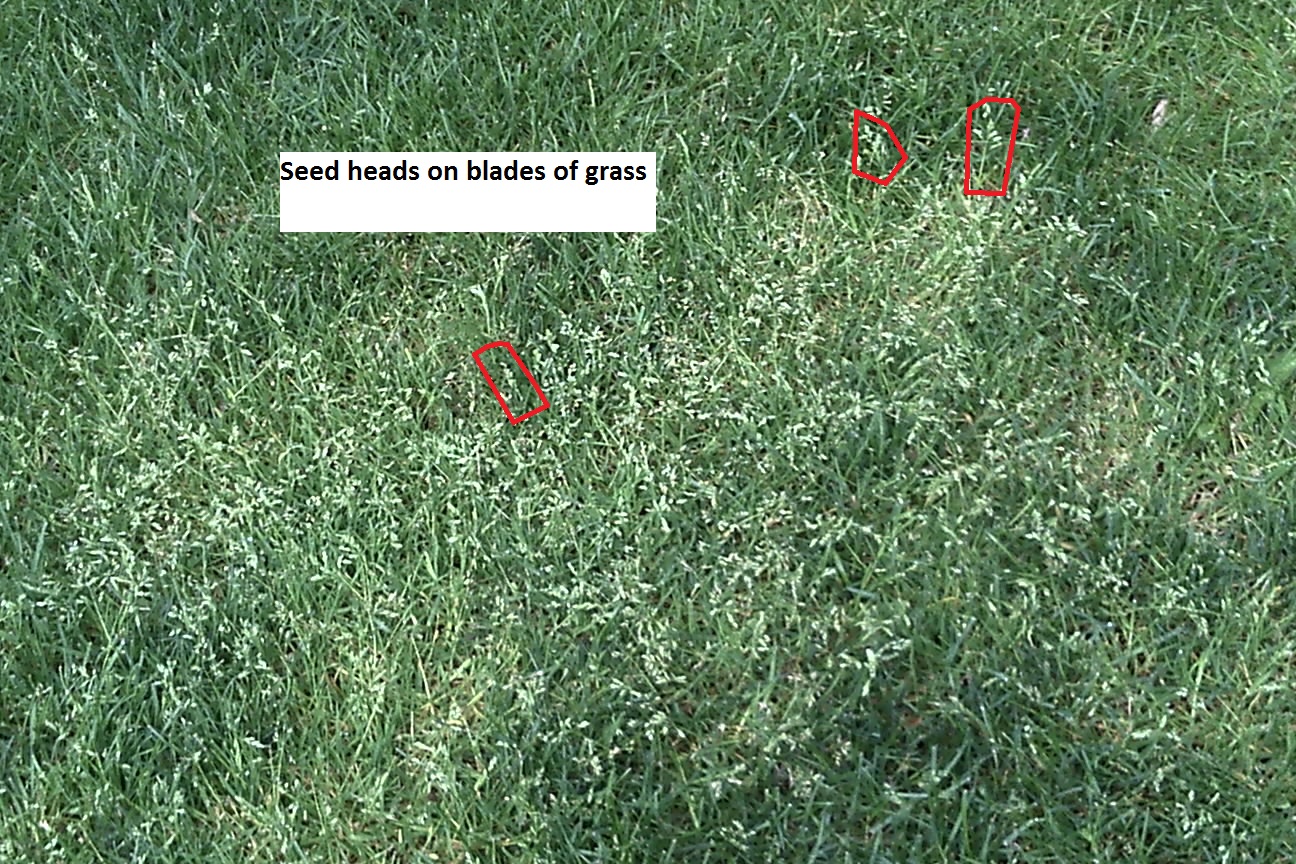
The red shapes are hilighting individual blades of grass going to seed.
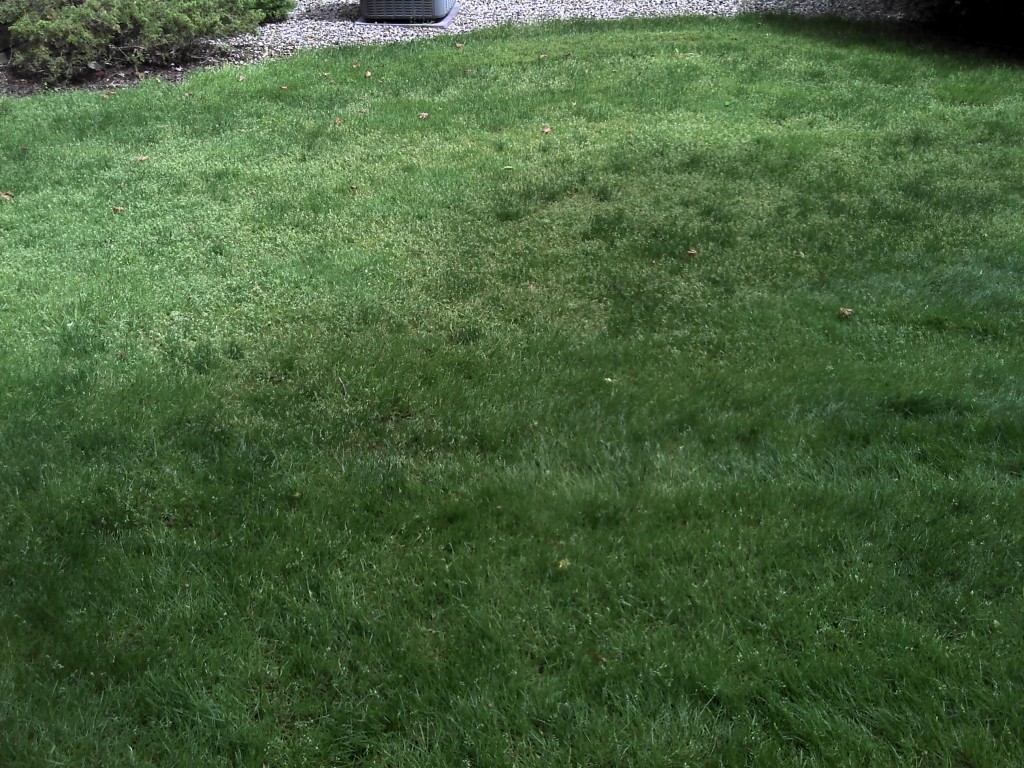
Remember how nice March was? We are seeing the consequences of record setting heat that caused trees and shrubs to bud out too early. Heavy frosts in April damaged the buds and now leaves are curling, turning brown, and even falling from trees. The frost damage looks bad, but it will not threaten the tree. The trees are healthy despite their appearance.
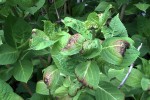
Hydrangea with frost damage
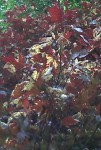
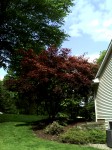
This Japanese Maple had no frost damage on the left where it was under a large tree. The right half had lots of damage.
This Spring I have been frequently asked how the hot temperatures we’ve experienced in March will affect our crabgrass control. Now that we have finally returned to “normal temperatures” I can better answer this question.
Spring accelerated from snow on the ground on March 3 to 62 degree soil temperatures on March 18. Crabgrass germinates when soil temperatures are at 55 degrees for 3 consecutive nights. We had over a week of soil temperatures above 60 degrees. Forsythia were blooming the 3rd week of March, which usually happens in mid-April. Crabapple trees were blossoming the next week, this usually happens in late April or early May. The grass was growing the last week or March, this usually does not happen until late April. We managed to rocket through 8 weeks of climate change in 3 weeks.
I struggled with the decision to continue applying crabgrass control knowing that it was too late to be effective. I had many discussions with other lawn care professionals and even professors at MSU. We were in unchartered territory and nobody knew what to do. History and logic told us that “this cannot be happening”, but it was. 80 degree temperatures in March are not uncommon. However, sustained high day time and night time temperatures are unprecedented. The temperatures usually plummets 40 degrees after an 80 degree day in March.
I made the decision in mid-March to continue applying crabgrass control with the hope of a frost. A frost would kill any crabgrass that germinated and our pre-emergent would then be effective stopping more crabgrass from germinating. I am glad I made that decision because this week we finally received that frost. Hopefully our weather is back to “normal” and we will have effective crabgrass control. Rest assured that if we applied your crabgrass control and you get crabgrass this summer, we will take care of it.